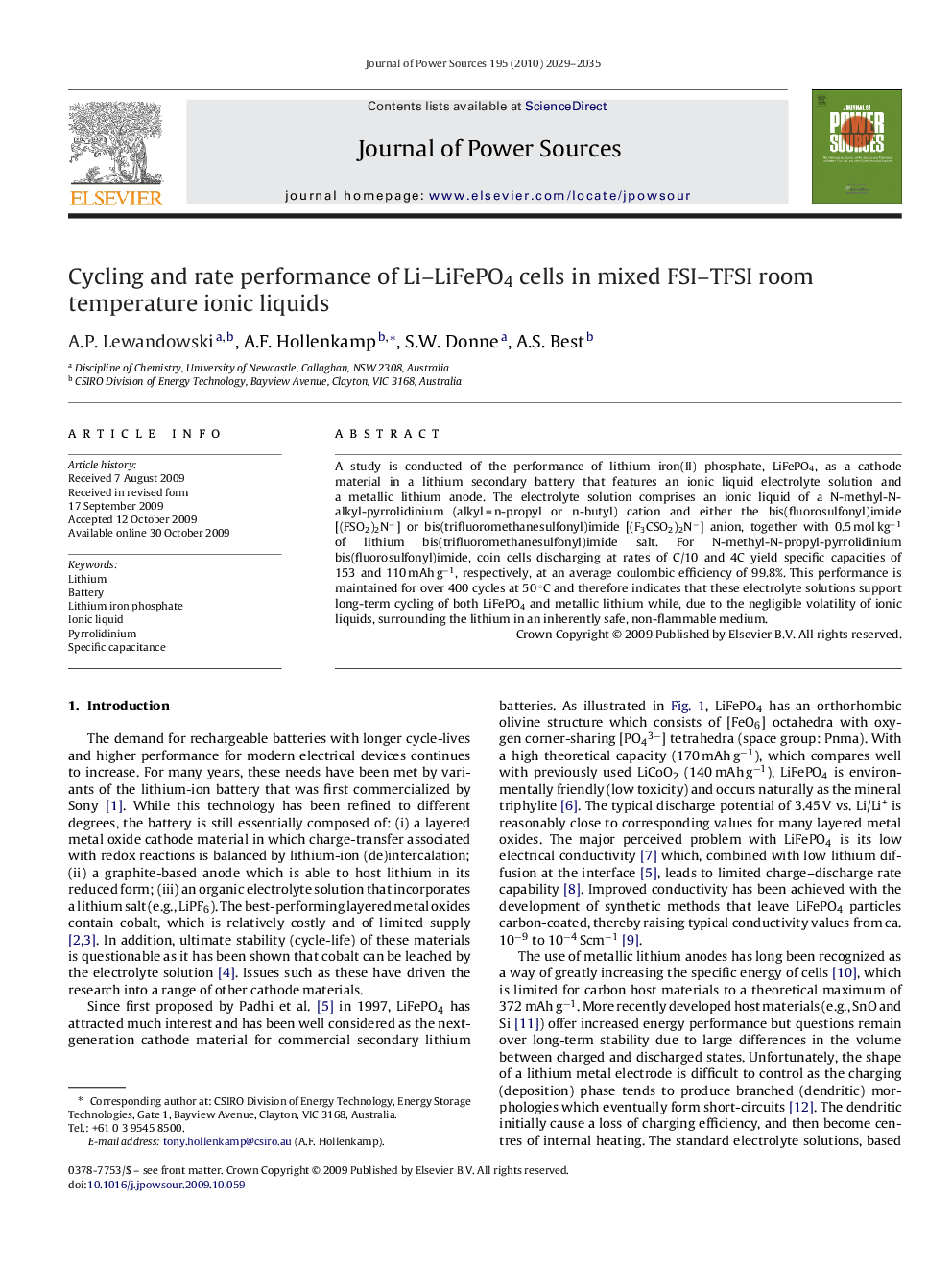| Article ID | Journal | Published Year | Pages | File Type |
|---|---|---|---|---|
| 1289184 | Journal of Power Sources | 2010 | 7 Pages |
A study is conducted of the performance of lithium iron(II) phosphate, LiFePO4, as a cathode material in a lithium secondary battery that features an ionic liquid electrolyte solution and a metallic lithium anode. The electrolyte solution comprises an ionic liquid of a N-methyl-N-alkyl-pyrrolidinium (alkyl = n-propyl or n-butyl) cation and either the bis(fluorosulfonyl)imide [(FSO2)2N−] or bis(trifluoromethanesulfonyl)imide [(F3CSO2)2N−] anion, together with 0.5 mol kg−1 of lithium bis(trifluoromethanesulfonyl)imide salt. For N-methyl-N-propyl-pyrrolidinium bis(fluorosulfonyl)imide, coin cells discharging at rates of C/10 and 4C yield specific capacities of 153 and 110 mAh g−1, respectively, at an average coulombic efficiency of 99.8%. This performance is maintained for over 400 cycles at 50 °C and therefore indicates that these electrolyte solutions support long-term cycling of both LiFePO4 and metallic lithium while, due to the negligible volatility of ionic liquids, surrounding the lithium in an inherently safe, non-flammable medium.
